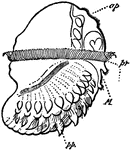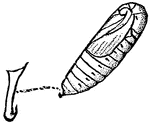
Fallweb Worm Pupa
An illustration of a fallweb worm pupa. Fall webworm, Hyphantria cunea, is a moth in the family Arctiidae…

Fallweb Worm Moth
An illustration of a fallweb worm moth. Fall webworm, Hyphantria cunea, is a moth in the family Arctiidae…
Army Worm
The Fall Army Worm (Spodoptera frugipeda) is part of the order of Lepidoptera and are the caterpillar…
Double-Toothed Prominent Caterpillar
The caterpillar stage of the double-toothed prominent (Nerice bidentata) showing its serrated back.
Circulatory System of an Annelid
Anterior part of the circulatory system of an annelid. The arrows indicate the direction of the flow.…
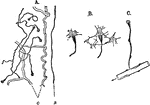
Protonephridium
Structure of the protonephridium (excretory organ) of a flatworm. A, part of the excretory apparatus…

Protonephridium of an Annelid
Structure of the protonephridium (excretory organ) of an annelid. Labels: Wtr, ciliated funnels; Ds,…

Protonephridium of a Shark
Structure of the protonephridium (excretory organ) of a shark. Labels: Wtr, ciliated funnels; Ug, segmental…

Nervous System of the Flatworm
Nervous system of a flatworm. Labels: G, cerebral ganglia and eyes; St, the two lateral nerve trunks;…
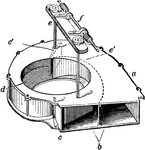
Hydraulic Scroll
"Hydraulic Scroll. a, case, inclosing center-discharge turbine water-wheel; b, openings for inflow of…
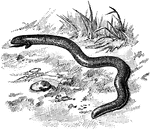
Four-Toed Worm Lizard
The four-toed worm lizard (Chirotes canaliculatus) is a reptile of the Amphisbaenidae family of usually…

Common Glowworm
The Common Glowworm (Lampyris noctiluca) is a species of beetle in the Lampyridae family of fireflies.
Demoscolecida
"Demoscolecida, a group of minute marine worm-like creatures. The body tapers towards each end and is…
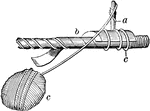
Serving Mallet
"A semicylindrical piece of wood, fitted with a handle...used for convenience in serving ropes...to…

Shipworm
The Shipworm (Teredo navalis) is a saltwater clam that is known for boring into wooden structures such…
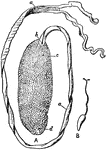
Bonellia Viridis (Male)
Illustration of a male green spoonworm. A, Bonellia viridis; B, mouth; C, ventral hooks; and d, anus.…

Bonellia Viridis (Female)
Illustration of a female green spoonworm. A, Proboscis cut short; B, bristle passing though the mouth…

Bonellia Viridis (Male)
Illustration of a male green spoonworm. A, Generative pore with spermatozoa; B, Anterior blind end of…

Slit Worm Snail
The shell of a Slit Worm Snail (Siliquaria anguina). The species is a gastropod mollusc that has an…
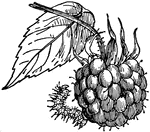
Raspberry Spanworm
The Raspberry Spanworm (Synchlora aerata) is the larva of a species of Geometer moth.
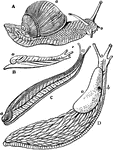
Snail and Slug
A series of Stylommatophorous Pulmonata, showing transitional forms between snail and slug.
Chaetognatha
Chaetognatha is a phylum of predatory marine worms that are a major component of plankton worldwide.…

Nereis
A diagram of of the nephridium of Nereis. Nereis is a genus of polychaete worms in the family Nereidae.…

Dasychone Infracta
An illlustration of a dasychone infracta, a type of annelid. The annelids, collectively called Annelida…
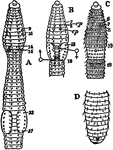
Earthworm
"Diagrams of various earthworms to illustrate external characters. A, B, C, anterior segments from the…
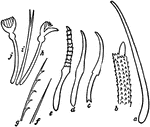
Setae of Earthworm
An illustration of the various types of earthworm setae. Seta (plural: setae) is a biological term derived…

Sectional View of Acanthobdella
An illustration of a sectional view of a Acanthobdella, a member of the annelid family. "c, Coelom;…
Tapeworm
Echinobothrium typus is a species of tapeworm distinguished by two fossettes with hooks on its head.
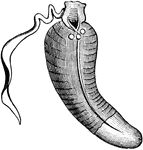
Spoon Worm
Echiurus gaertneri is a species of spoon worm considered annelids, though they are not segmented.

Polymoë
"Elytrum of Polymoë, a polychaetous annelid, bearing fimbriae, viewed from above." -Whitney, 1911
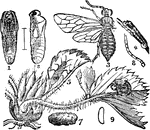
Strawberry Sawfly
"Strawberry False-worm (Emphytus maculatus). 1, 2 pupa, ventral and lateral views (line shows natural…

Scale Worm Nervous System
"Esophageal Ring. Anterior end of nervous system of Polynoë, a polychaetous annelid, showing, a,…

Milkweed Tiger Moth Larva
The larva Milkweed Tiger Moth (Euchaetes egle) is also known as the Milkweed Tussock caterpillar.

Euchone
Euchone elegans is a species of marine worms in the family, Terebellidae, sometimes known as spaghetti…

A Still Showing the Separation of a Liquid from a Solid
"Figure 5 shows a form of the apparatus for separating a liquid from another of different boiling point,…
Flatworm
Flatworms are flattened, leaf-like forms living in damp places on land, in freshwater streams of ponds,…
Flatworm
Flatworms are flattened, leaf-like forms living in damp places on land, in freshwater streams of ponds,…

Flatworm
Flatworms are flattened, leaf-like forms living in damp places on land, in freshwater streams of ponds,…
Flatworm
Flatworms are flattened, leaf-like forms living in damp places on land, in freshwater streams of ponds,…
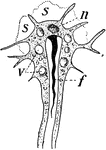
Flatworm
Flatworms are flattened, leaf-like forms living in damp places on land, in freshwater streams of ponds,…
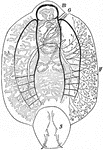
Flatworm
Flatworms are flattened, leaf-like forms living in damp places on land, in freshwater streams of ponds,…

Tapeworm
The cestodes or tapeworms (Toenia solium), are parasitic flatworms. The body is usually of great length…
Threadworm
Threadworm (Nematodes) or Roundworm is composed of many different species. In all the body is slender…

Roundworm
In the Trichina, a parasitic roundworm, the bodies of several animals, particularly the rat, are host…
Earthworm
The earthworms are also known as megadriles, in the families Tubificidae, Lumbriculidae, and Enchytraeidae,…

Earthworm Anatomy
The earthworms are also known as megadriles, in the families Tubificidae, Lumbriculidae, and Enchytraeidae.…

Marine Worm
Marine worms, also known as Nereis, a worm with highly developed heads and many bristles arranged along…
Marine Worm
Marine worms, also known as Nereis, a worm with highly developed heads and many bristles arranged along…
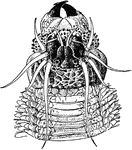
Marine Worm
Marine worms, also known as Nereis, a worm with highly developed heads and many bristles arranged along…
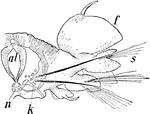
Marine Worm
Marine worms, also known as Nereis, a worm with highly developed heads and many bristles arranged along…
Marine Worm
Marine worms (Polynoe bevisetosa), a worm with highly developed heads and many bristles arranged along…
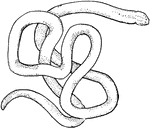
Nemetean
Band or Nemetean worms have been discovered in damp soil or in fresh-water streams. These are commonly…

Nemetean
Band or Nemetean worms have been discovered in damp soil or in fresh-water streams. These are commonly…
Metamorphosis of a Monarch Butterfly
A butterfly is an insect of the order Lepidoptera. Like all Lepidoptera, butterflies are notable for…

